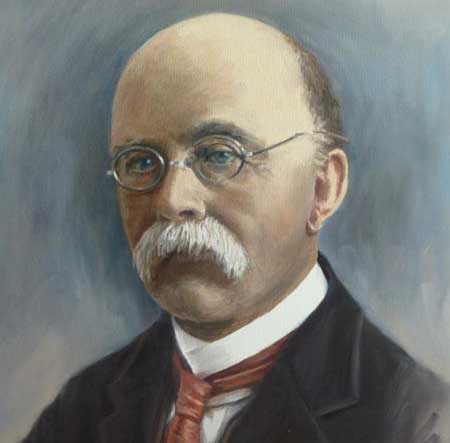1920–1929
Augustine Henry (1857-1930), having qualified in medicine, joined the Chinese Imperial Maritime Customs Service in 1881. During his time in China he became interested in botany and collected specimens of native plants, many of which he sent to the Botanic Gardens in Kew, London. His research, together with his published correspondence and reports, gained him an international reputation as an expert on Chinese flora. However, by the time he left China in 1900, shocked by the rate at which that country was being deforested, his interests had turned to the study of forestry.
In 1907 he gave expert evidence about forestry to an Irish departmental committee, recommending that Irish forestry policy should concentrate on conifer cultivation in commercially viable plantations of more than 500 acres. Following his appointment as the first professor of forestry at the RCScI in 1913, Henry and his wife Alice (Elsie) moved to Dublin, where their home in Ranelagh became a meeting place for a wide circle of friends including the Yeats family, George Russell (AE), Erskine Childers and Evelyn Gleeson.
Henry continued his teaching and research during the war years while Elsie worked with the sphagnum moss detachment at the RCScI, earning an OBE for her efforts. He remained as professor after the RCScI became part of UCD in 1926, retiring shortly afterwards. Augustine Henry continued his advocacy of a national plan for forestry to the government of independent Ireland. He was involved in developing the national Forestry Service and is regarded as the father of Irish commercial forestry.


 Above: Title page of volume 7 of 'The Trees of Britain and Irelan' by H.J. Elwes and Augustine Henry (1913)
Above: Title page of volume 7 of 'The Trees of Britain and Irelan' by H.J. Elwes and Augustine Henry (1913)